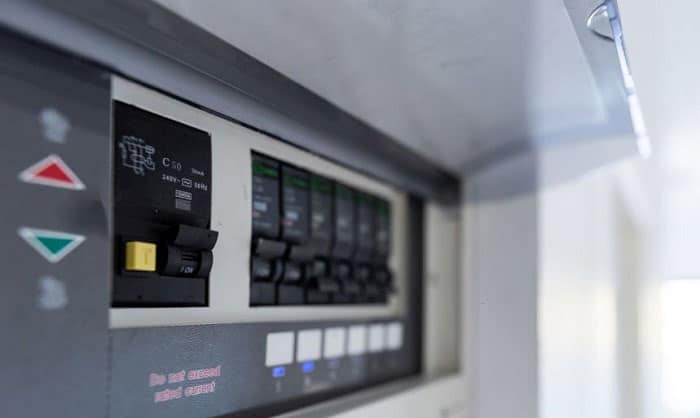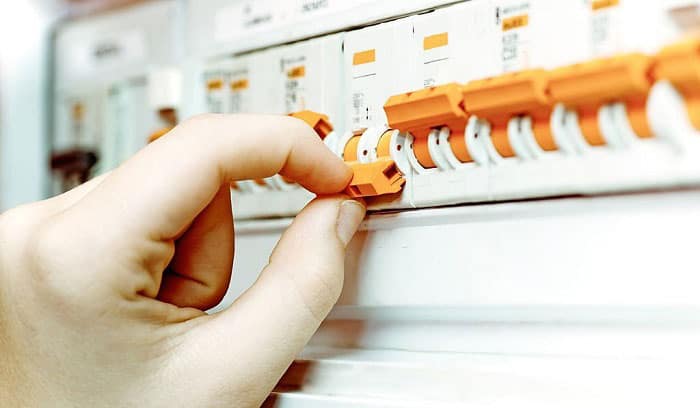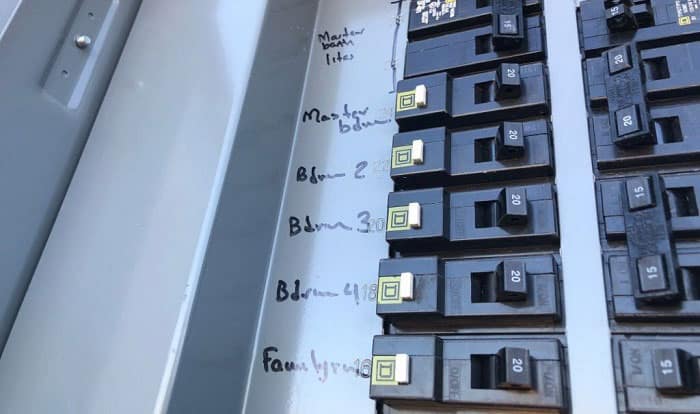When you’ve lived in a house for several years, you may experience different sorts of electrical problems. One of them could damage the circuit breaker. In this case, you will need to replace it with a new one.
However, replacing a damaged circuit breaker is not easy, since many different types of circuit breakers are available on the market.
In the end, you might even resort to paying a professional to find the proper replacement for your damaged CB. That is why, to save time and money, it is essential to know how to identify circuit breaker types.
This article will give you an idea of how to do so.
Table of Contents
How to Identify Different Types of Breakers
It is not enough to know the amp rating for your old circuit breaker brands. Due to differences in size, features, and installation methods, not all circuit breakers are interchangeable.
To avoid wasting your time and money on buying the wrong home circuit breaker replacement, you should know how to identify the one you have. Here are the things you need to look for.
1. Look for Breaker Box Label
The easiest way to identify your circuit breaker, as well as your electrical panelboards, is to look for their label. No matter which kind of breaker box you use, manufacturers likely put sticker labels on its internal surface for guidance.
The label indicates safety warnings, the model or type of the panelboard, and the suggested type of breakers for breaker box. Furthermore, there is also a space that you can use to label each circuit you have in your electrical system.
2. Identify the Type of Circuit Breaker
Aside from the breaker box and panelboards, you may also consider the type of breaker. The most common breaker you may see in a typical home is the standard circuit breaker. But there are also special circuit breakers such as GFCI, AFCI, and DFCI that have additional safety features.
The GFCI, AFCI, and DFCI breakers all have a test button, which makes them hard to differentiate. That said, sometimes, you can identify circuit breaker brand and its type with the label indicated near the test button. However, for the other brands with no label on their circuit breakers, they can be identified by the color of the test button.
For example, on the Homeline breakers, the AFCI has a white test button, while the GFCI has a yellow test button. On the other hand, the color of these test buttons for other brands of GFCI and AFCI breakers might be yellow or blue.
Additionally, the test button might be purple or red for different brands of DFCI or Dual Function Circuit Interrupter circuit breaker.
Here is a short video by Circuit Breaker Wholesale about the three main circuit breakers for house. It will help you learn the features of a standard circuit breaker, GFCI, and AFCI circuit breaker.
3. Look for the Mounting Types
Another thing to consider when looking for a replacement breaker is the mounting feature of the breaker. Yes, UL classified circuit breakers can be used for different types of load centers or panelboards. However, not all circuit breakers can fit into other panelboards, especially if they come from different manufacturers.
The mounting or connection types refer to the installation process of different circuit breaker types. It might be a plug-on, stab-lock, and bolt-on mounting, depending on the breaker types. Different mounting also uses different load centers, but sometimes depending on their brand, it can be interchangeable.
One best example of these mounting fittings is the Square D breakers. A plug-on circuit breaker has a clip that you can use for easy plugging into the bus bar. On the other side, a Homeline residential circuit breaker has a stab lock feature where it needs to be stabbed to its load center. These breakers are not interchangeable, even if they come from one manufacturer.
Furthermore, a QOB breaker type has a bolt-on feature that needs to be screwed on a particular bolt-on load center. A plug-on circuit breaker can be used for a QO load center, but you cannot use a bolt-on breaker in it.
In addition, to identify the type of breaker you have in your breaker panel, you may look for an identification chart online. Different circuit breaker manufacturers have their own circuit breaker charts to help customers find the proper replacement.
QO vs Homeline Breakers
You may have old circuit breakers types like QO and Homeline and think they’re identical. Though these breakers come from the same manufacturer, they have many differences.
A QO standard breaker has a small window where you can see if it’s in the trip position or on position. On the other hand, Homeline breakers have no windows like this.
You will also notice that a QO double-pole breaker has only one switch while a Homeline double-pole breaker has a bridge switch.
Another circuit breaker identification tip for the Homeline and QO is to look at the size. Typically, QO breakers are thinner than Homeline circuit breakers.
Conclusion
It is essential to know how to identify circuit breaker types. In case of an emergency, you can easily purchase a circuit breaker replacement without needing help from a professional.
Furthermore, searching for a circuit breaker compatibility chart with pictures of different brands will also make the process easy.
Does this article help you identify what circuit breaker you currently using in your breaker box? Can you tell what type and brand of circuit breaker you have in your panel? Let us know by writing in the comment box below.

I am Edwin Jones, in charge of designing content for Galvinpower. I aspire to use my experiences in marketing to create reliable and necessary information to help our readers. It has been fun to work with Andrew and apply his incredible knowledge to our content.



